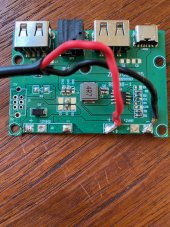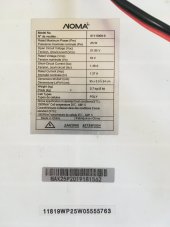Hi folks,
I bought one of these "Solar Regulator Voltage Stabilizer Charge Controller with Indicator Lamp Design Dual USB Charge Voltage Controller Regulator" off Amazon (but see the same product here on Aliexpress).
No documentation came with it, so I just soldered the red to one + and the black to the - ... and it didn't work.
Wait for a sunny day... still doesn't work. Maybe I used the wrong terminals, so I put on a couple of alligator clip jumpers to the other terminals—and it works!
So, desolder and resolder to the other terminals... and it doesn't work. Add jumpers—and it works!
Can someone explain what the heck is going on here, and what I should do?
Thank you for any help you can give.

I bought one of these "Solar Regulator Voltage Stabilizer Charge Controller with Indicator Lamp Design Dual USB Charge Voltage Controller Regulator" off Amazon (but see the same product here on Aliexpress).
No documentation came with it, so I just soldered the red to one + and the black to the - ... and it didn't work.
Wait for a sunny day... still doesn't work. Maybe I used the wrong terminals, so I put on a couple of alligator clip jumpers to the other terminals—and it works!
So, desolder and resolder to the other terminals... and it doesn't work. Add jumpers—and it works!
Can someone explain what the heck is going on here, and what I should do?
Thank you for any help you can give.






